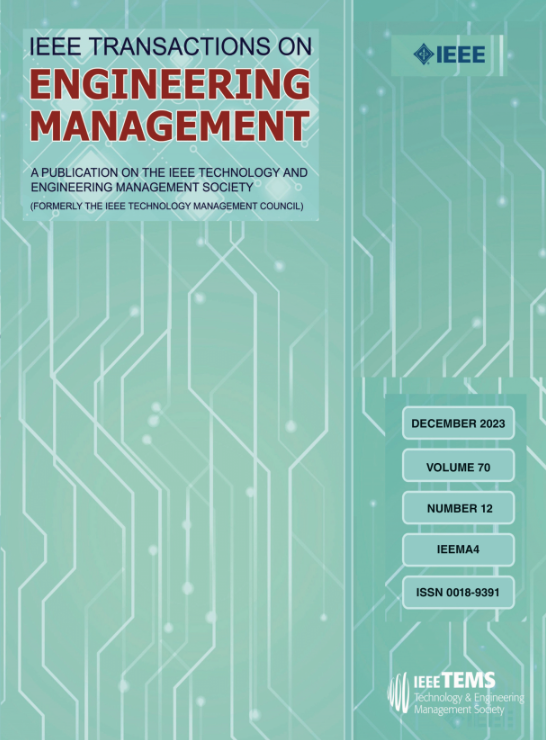Open Innovation Where it Really Matters: The U-Shaped Relationship Between Relative Open Innovation and Innovation Performance in Developing Countries
IF 4.6
3区 管理学
Q1 BUSINESS
引用次数: 0
Abstract
In the innovation literature, there are mixed findings as to the influence of open innovation on innovation performance, which may be due to the predominantly exclusive focus on the level of open innovation rather than on its comparison with closed innovation (i.e., relative open innovation) thereby considering the costs associated with opening up. To address this issue, we empirically examine how relative open innovation is related to innovation performance. Our fieldwork is based on 130 Serbian firms. This sample is relevant because embracing open innovation can bring several benefits to firms from developing countries but, at the same time, the contextual limitations that firms in such countries have, make the adoption of open innovation costly. Using ordinary-least-squares regression, we find a U-shaped relationship between relative open innovation and innovation performance. We contribute to the literature by showing that firms with either low or high relative open innovation achieve a greater innovation performance than those with medium-level relative open innovation. This is due to the fact that the costs associated with opening up (i.e., transitioning from closed to open innovation) are highest at the medium level of relative open innovation, and especially prominent in developing countries.真正重要的开放式创新:发展中国家相对开放式创新与创新绩效的u型关系
在创新文献中,关于开放式创新对创新绩效的影响的研究结果好坏参半,这可能是由于主要只关注开放式创新的水平,而没有考虑其与封闭创新(即相对开放式创新)的比较,从而考虑了与开放相关的成本。为了解决这一问题,我们实证研究了相对开放式创新与创新绩效的关系。我们的实地考察以130家塞尔维亚公司为基础。这个样本是相关的,因为拥抱开放式创新可以给发展中国家的公司带来一些好处,但与此同时,这些国家的公司所具有的背景限制使得采用开放式创新成本高昂。利用普通最小二乘回归分析发现,相对开放式创新与创新绩效呈u型关系。我们通过证明相对开放创新水平低或高的企业比相对开放创新水平中等的企业获得更大的创新绩效来为文献做出贡献。这是因为与开放(即从封闭创新向开放创新过渡)相关的成本在相对开放创新的中等水平上最高,在发展中国家尤其突出。
本文章由计算机程序翻译,如有差异,请以英文原文为准。
求助全文
约1分钟内获得全文
求助全文
来源期刊

IEEE Transactions on Engineering Management
管理科学-工程:工业
CiteScore
10.30
自引率
19.00%
发文量
604
审稿时长
5.3 months
期刊介绍:
Management of technical functions such as research, development, and engineering in industry, government, university, and other settings. Emphasis is on studies carried on within an organization to help in decision making or policy formation for RD&E.
 求助内容:
求助内容: 应助结果提醒方式:
应助结果提醒方式:


